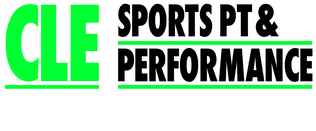In the past few years, many Sports PT’s have stopped using ultrasound due to lack of evidence that it actually works. To be honest, I’m one of those PT’s – the minute I hear that a patient had ultrasound done for something, I tend to roll my eyes and wish that person’s time wasn’t wasted on a more active means of treatment. However, I’m a person who strongly believes there is a “gray” area in everything- a clinician who makes healthcare decisions based only on one belief or area of training is doing patients a disservice.
Saying something like “ultrasound is always bad” or “never ever ever stretch” is just as awful to me as the PT who ultrasounds every patient. True clinical judgment is the art of making decisions based on the unique needs of the patient at the time they are in front of you. Different patient, different goals, or even different time of day or stresses on the injury come into play here. In fact, Erik Meira wrote a fantastic blog post on the reason why there is always some sort of uncertainty in science and application into the PT world.
Ok… back off the soapbox and onto the real reason for the article. This paper recently made its way into the Journal of Orthopaedic and Sports Physical Therapy (JOSPT). The paper looked at the use of ultrasound, lasers, vibration massage, and interferential current (e-stim) for the achilles tendon… aka, “passive modalities”… basically the patient just sits there passively for the treatment.
Why the achilles tendon? Because this tendon has been shown to have a poor blood supply, and those of us in the sports medicine world are hoping to find a way to boost that blood supply – to allow healing for any runners, basketball players, or other athletes who put a ton of stress through that tendon. (Anyone out there have one of those injuries? Then you probably understand… not fun)
This paper is a great one and I highly recommend that you read it yourself, but I’ll summarize a few key points for now.
- In healthy adults (take note of this… I’ll talk about it more later), ultrasound improved tendon circulation (aka blood flow)
- BUT- the ultrasound had to be dosed at a higher level (1.2W/cm2 for all you science geeks out there). The lower level ultrasound didn’t give the same results
- Vibration massage targeting the achilles tendon also improved circulation
Remember how I stressed “healthy” adults? Just keep in mind that people with an actual achilles injury were not studied. So we can generalize this might help injured athletes…but we cant definitively say that ultrasound should be the treatment for every person. (If you read this entire article, you’d probably understand that I wouldn’t make sweeping, definitive statements like that anyway.)
Bottom line: if dosed effectively, ultrasound may help with achilles’ issues. Vibration massage could be helpful too. These things should be a component of treatment… as much as I hate saying “a tool in our toolbox,” it really is one. Pairing an active treatment (eccentrics, strengthening, stabilization) with these passive ones is likely the most effective strategy.
And don’t forget to find the cause of the issue in the first place. Is there an issue with running form? Is there another injury or muscle imbalance causing unnecessary stress on the achilles? Did the athlete ramp up their training too fast? Otherwise we could ultrasound or massage the heck out of a tendon that will never get better. Alright… “never say never”… but you get the idea…

